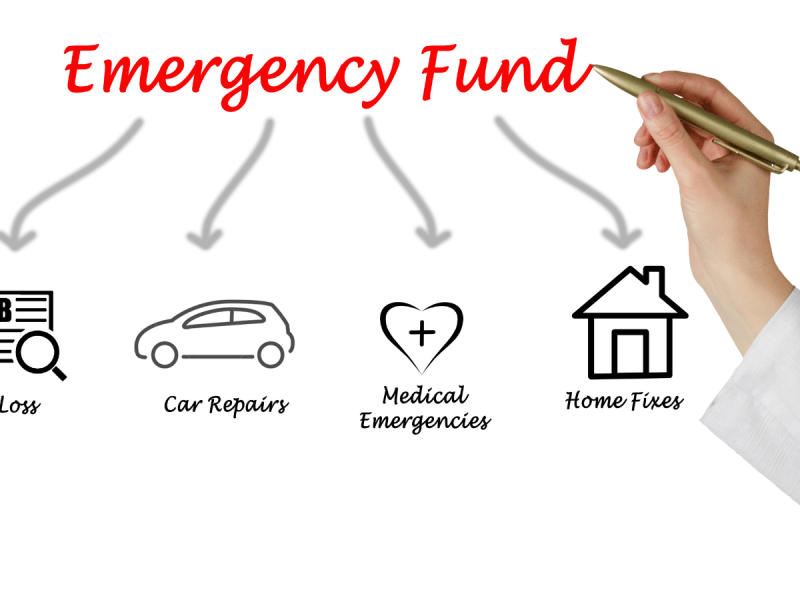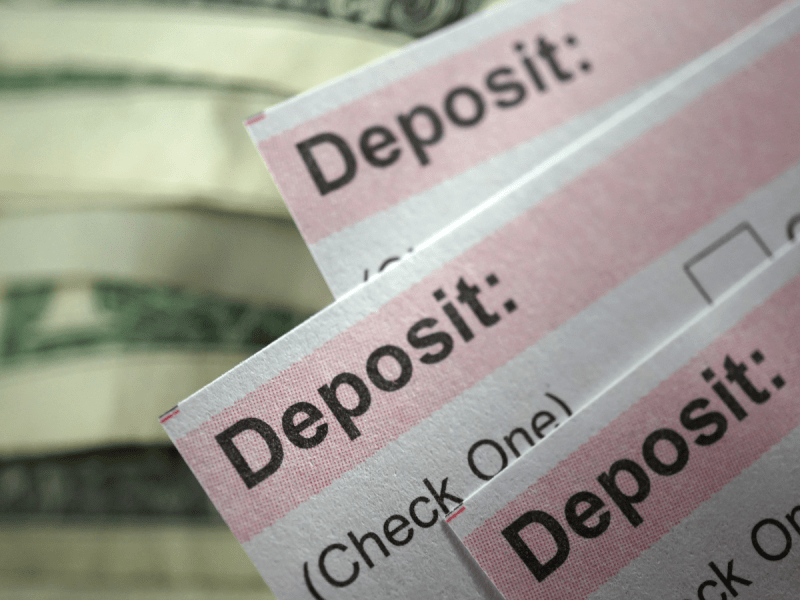In a world where unexpected expenses can come out of nowhere, having a solid financial safety net is crucial. An emergency fund provides this safety net, offering peace of mind and financial security when life throws you a curveball.
No matter what stage of life you are in, building an emergency fund is an essential step toward financial resilience and stability.
This comprehensive guide will walk you through the importance of an emergency fund, how to build one, and practical strategies to maintain and grow it.
Understanding the Importance of an Emergency Fund

What is an Emergency Fund?
An emergency fund is a cash reserve set aside to cover unforeseen expenses. These could include medical bills, car repairs, or even sudden job loss. Unlike a general savings account, an emergency fund is specifically designated for emergencies, providing a financial buffer in times of need. Having this dedicated reserve ensures that you are not left scrambling for funds or forced to liquidate investments at unfavorable times.
Building an emergency fund is a proactive measure to protect your financial health. It is not just about saving money but about creating a financial shield that can absorb the shock of unexpected expenses. This fund acts as your financial first responder, giving you the time and resources to address emergencies without derailing your long-term financial goals.
Why You Need an Emergency Fund
Financial security is paramount. Without an emergency fund, you may find yourself relying on credit cards or loans to cover unexpected expenses, leading to debt accumulation and financial stress. An emergency fund helps you avoid these pitfalls by ensuring you have the resources to handle emergencies without disrupting your financial stability. It also provides peace of mind, knowing that you have a backup plan in place.
Moreover, an emergency fund can prevent you from making hasty financial decisions. In times of crisis, having immediate access to funds allows you to make thoughtful and deliberate choices, rather than being forced into high-interest debt or other unfavorable financial positions. This financial cushion can be the difference between a minor setback and a major financial crisis.
Savings vs. Emergency Fund
While both savings and emergency funds are important, they serve different purposes. A savings account is typically used for planned expenses, such as vacations or major purchases. In contrast, an emergency fund is reserved exclusively for unplanned, urgent financial needs. Understanding this distinction is key to effective financial planning. Mixing the two can lead to a depleted emergency fund when you need it the most.
It’s essential to keep your emergency fund separate from other savings to ensure clarity and purpose. This separation reinforces the discipline needed to avoid dipping into your emergency fund for non-emergencies. Additionally, having both types of savings ensures that you are prepared for both planned and unexpected financial events.
How Much Should You Save in Your Emergency Fund?
Assessing Your Needs
The amount you need in your emergency fund depends on various factors, including your monthly expenses, job stability, and personal circumstances. A common recommendation is to save three to six months’ worth of living expenses. However, this can vary based on individual needs and risk tolerance. For instance, freelancers or those with unstable income might aim for a larger fund, while someone with a stable job might feel comfortable with a smaller reserve.
Consider your personal situation, such as the number of dependents you have, your health, and your job security. These factors can significantly influence the amount you need to feel financially secure. Tailoring your emergency fund to your specific needs ensures that you are adequately prepared for your unique circumstances.
Setting Realistic Goals
Starting an emergency fund can seem daunting, but setting realistic, incremental goals can make the process more manageable. Begin by aiming to save one month’s worth of expenses, and gradually build from there. Celebrating small milestones along the way can keep you motivated and on track. Breaking down your ultimate goal into smaller, achievable steps makes the process less overwhelming and more attainable.
Consider setting up a timeline for reaching your savings goals. For example, aim to save one month’s worth of expenses within three months, and then increase your target to three months’ worth within a year. This structured approach provides a clear roadmap and helps you stay focused and disciplined.

Choosing the Best Savings Account for Your Emergency Fund
High Yield Savings Account for Emergency Fund
A high-yield savings account is an excellent option for your emergency fund. These accounts typically offer higher interest rates compared to regular savings accounts, allowing your money to grow faster while remaining easily accessible in case of emergencies. The higher interest can add up over time, providing an additional boost to your savings efforts.
When choosing a high-yield savings account, compare interest rates, fees, and account features across different banks. Look for an account that offers competitive rates without high fees that could erode your savings. This balance ensures that your money works as hard as possible for you while remaining safe and accessible.
Accessibility and Liquidity
When choosing an account for your emergency fund, consider accessibility and liquidity. Your funds should be readily available when you need them, without penalties for withdrawals. Avoid accounts with restrictions or fees that could hinder your ability to access your money quickly. The goal is to have immediate access to funds during an emergency without financial penalties.
It’s also wise to choose an account that offers easy online access, so you can transfer funds quickly in a crisis. Some accounts may offer features such as mobile check deposit or ATM access, which can be incredibly convenient. Ensuring that your emergency fund is both accessible and liquid is crucial for effective financial preparedness.
FDIC Insurance
Ensure that the savings account you choose is FDIC-insured. This guarantees that your money is protected up to the maximum allowed by law, providing an additional layer of security for your emergency fund. FDIC insurance protects your deposits in the unlikely event that the bank fails, ensuring that your hard-earned money is safe.
In addition to FDIC insurance, consider the reputation and stability of the bank. Choosing a well-established and financially sound institution adds another level of security to your emergency fund. Researching and selecting a reliable bank ensures that your savings are in good hands.
Strategies for Building Your Emergency Fund
Automate Your Savings
Automating your savings is one of the most effective ways to build your emergency fund. Set up automatic transfers from your checking account to your emergency fund savings account. By making savings a priority and automating the process, you’ll steadily grow your fund without the temptation to spend the money elsewhere. This “set it and forget it” approach simplifies the savings process and ensures consistency.
You can also align your automated transfers with your payday to make saving effortless. For example, if you get paid bi-weekly, set up an automatic transfer on the same day to ensure a portion of your income goes directly into your emergency fund. This method helps you save regularly without having to think about it.
Cut Unnecessary Expenses
Take a close look at your monthly expenses and identify areas where you can cut back. Small changes, such as brewing your own coffee or canceling unused subscriptions, can add up over time. Redirect these savings into your emergency fund to accelerate your progress. Tracking your spending can help you identify and eliminate wasteful expenses.
Consider using budgeting apps to monitor your expenses and identify savings opportunities. These tools can provide insights into your spending habits and help you make informed decisions about where to cut back. Every dollar saved can bring you closer to your emergency fund goal.
Increase Your Income
If possible, consider ways to increase your income. This could involve taking on a part-time job, freelancing, or selling items you no longer need. Use any extra income to boost your emergency fund, helping you reach your savings goals faster. Diversifying your income sources can provide additional financial security and expedite your savings efforts.
Exploring passive income opportunities, such as renting out a room or investing in dividend-paying stocks, can also contribute to your emergency fund. These additional income streams can provide a steady flow of money that can be directed towards your savings. Increasing your income not only helps build your emergency fund but also enhances your overall financial stability.
Maintaining and Growing Your Emergency Fund

Regularly Review and Adjust
Your financial situation and expenses can change over time, so it’s essential to regularly review and adjust your emergency fund. Reassess your needs annually or after significant life changes, such as a new job or the birth of a child, to ensure your fund remains adequate. Regular reviews help you stay on top of your financial needs and make necessary adjustments.
Consider setting a reminder to review your emergency fund every six months. During these reviews, evaluate your current expenses, income, and any upcoming financial obligations. This proactive approach ensures that your emergency fund remains relevant and sufficient for your needs.
Replenish After Use
If you need to dip into your emergency fund, make it a priority to replenish it as soon as possible. Treat it like a bill that needs to be paid, and allocate funds to rebuild your reserve. This ensures you remain prepared for future emergencies. Rebuilding your fund quickly helps maintain your financial safety net.
Consider setting up a repayment plan to systematically replenish your emergency fund. For example, allocate a certain percentage of your monthly income to rebuild the fund until it reaches your target amount again. This disciplined approach ensures that your emergency fund remains robust and ready for any future needs.
Continue Saving Beyond Your Emergency Fund
Once you’ve reached your emergency fund goal, continue saving for other financial goals. Having a well-funded emergency reserve is a significant accomplishment, but ongoing savings can help you achieve other aspirations, such as buying a home or investing for retirement. Diversifying your savings goals ensures long-term financial health and growth.
Consider opening additional savings accounts for specific goals, such as a vacation fund or a down payment fund. By compartmentalizing your savings, you can better track your progress and stay motivated. Continuing to save beyond your emergency fund ensures that you are always working towards financial improvement and stability.
Conclusion
Moreover, financial stability can enhance your personal development by reducing anxiety and improving mental clarity. When you’re not constantly worried about money, you can dedicate more energy and resources to self-improvement activities. This financial cushion can be a catalyst for achieving your personal growth objectives.
For students, unexpected expenses like textbooks, lab fees, or emergency travel can arise. Having an emergency fund ensures that these costs don’t derail your academic progress. This financial preparedness can contribute to a smoother and more successful academic journey.
As an early career professional, managing personal development while juggling professional responsibilities can be demanding. An emergency fund provides a safety net, enabling you to navigate professional obstacles and seize opportunities without the fear of financial setbacks.
This financial stability allows you to focus on advancing your career and achieving your professional goals.


